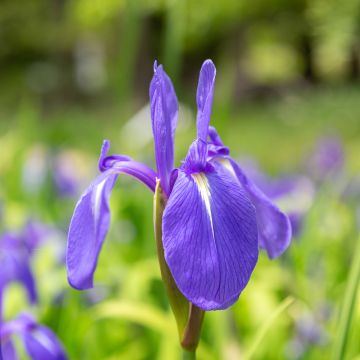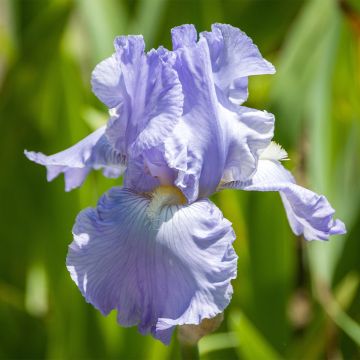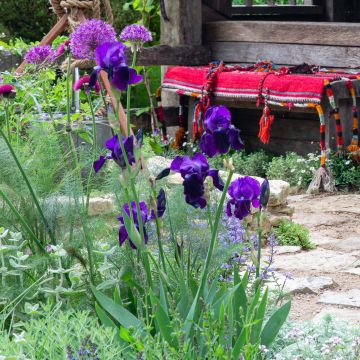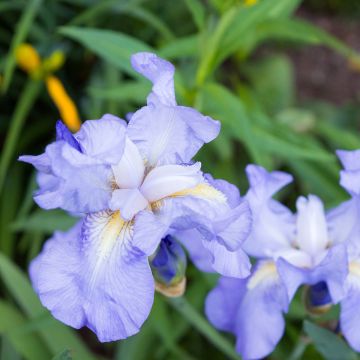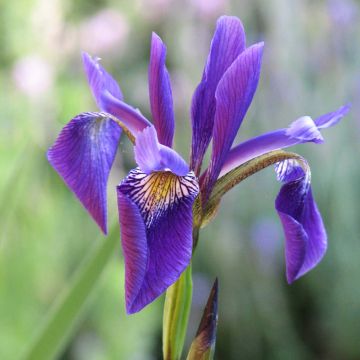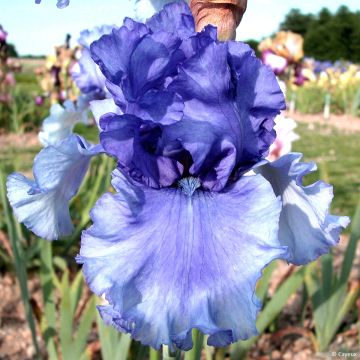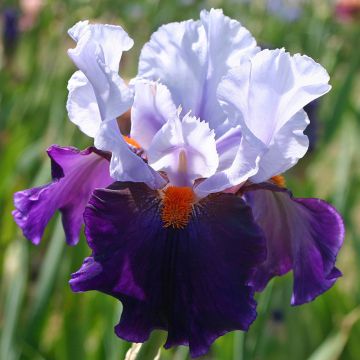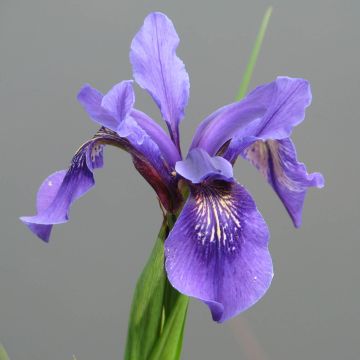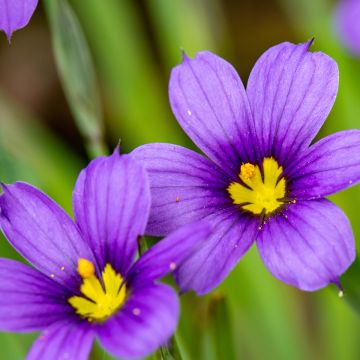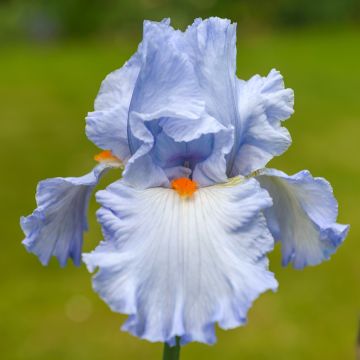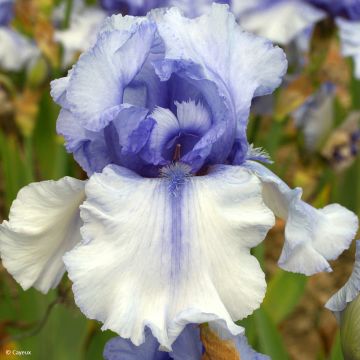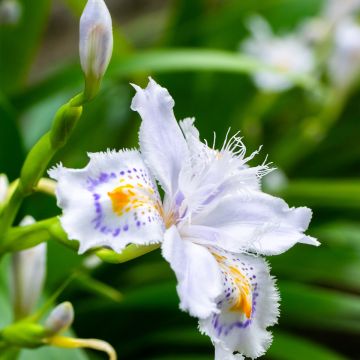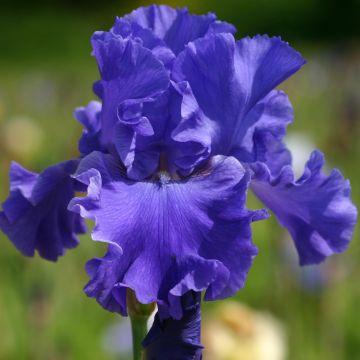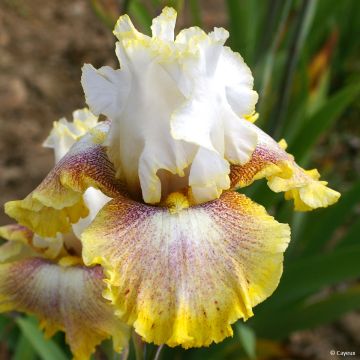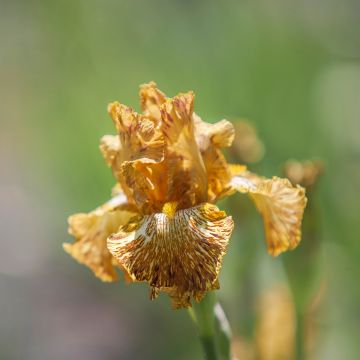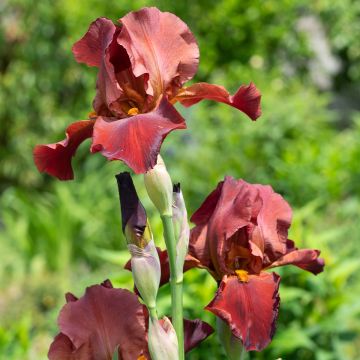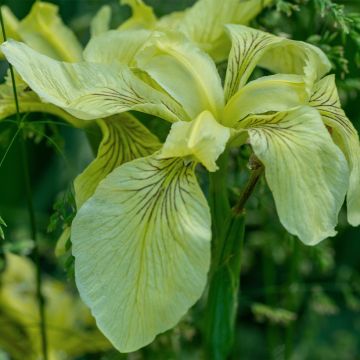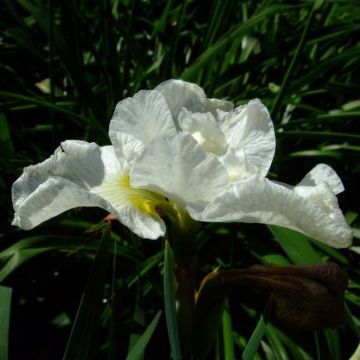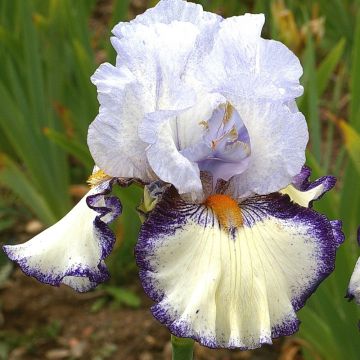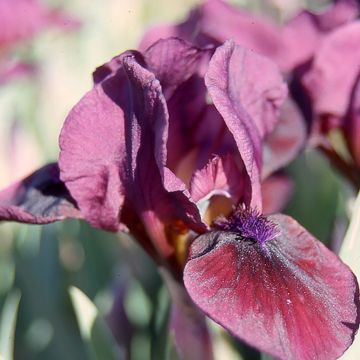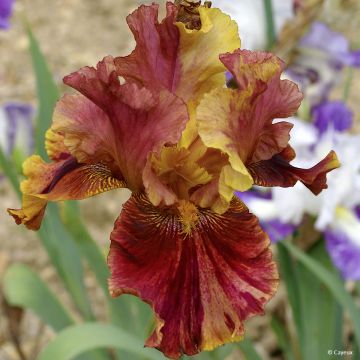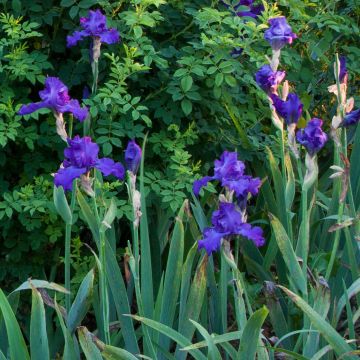Shipping country and language
Your country of residence may be:
Your country of residence is:
For a better user experience on our website, you can select:
Your shipping country:
Andorra
Austria
Belgium
Bulgaria
Canada
Chile
Croatia
Cyprus
Czechia
Denmark
Estonia
Finland
France
Germany
Greece
Hungary
Iceland
Ireland
Italy
Latvia
Lithuania
Luxembourg
Malta
Monaco
Netherlands
Poland
Portugal
Romania
Slovakia
Slovenia
Spain
Sweden
Switzerland
United Kingdom
We only deliver seed and bulb products to your country. If you add other products to your basket, they cannot be shipped.
Language:
French
German
Spanish
English
My Account
Hello
My wish lists
Plantfit
Log in / Register
Existing customer?
New customer?
Create an account to track your orders, access our customer service and, if you wish, make the most of our upcoming offers.


Iris versicolor Variegata
Iris versicolor Variegata - Water Iris
Iris versicolor Variegata
Blue Flag, Boston Iris
Why not try an alternative variety in stock?
View all →Order in the next for dispatch today!
Dispatch by letter from €3.90.
Delivery charge from €5.90 Oversize package delivery charge from €6.90.
More information
This item is not available in your country.
Schedule delivery date,
and select date in basket
This plant carries a 12 months recovery warranty
More information
We guarantee the quality of our plants for a full growing cycle, and will replace at our expense any plant that fails to recover under normal climatic and planting conditions.
From €5.90 for pickup delivery and €6.90 for home delivery
Express home delivery from €8.90.
Does this plant fit my garden?
Set up your Plantfit profile →
Description
Iris versicolor 'Variegata' is a remarkably sculptural variety with variegated foliage. This beautiful perennial for wet areas bears stylised blue-violet flowers with dark violet veins, dotted with white at the base. Its beautiful green foliage is striped with cream, and is gathered in dense tufts. A very hardy perennial, which slowly spreads to form beautiful colonies. It is ideal for ornamenting water points and sunny beds, in moist soil or under humid climates.
Iris versicolor is a deciduous herbaceous perennial plant with trailing rhizomes. It belongs to the Iridaceae family, native to wet to waterlogged areas from southeastern Canada to Virginia. It is common in carex meadows, marshes, and along riverbanks. The plant forms initially erect and then spreading dense tufts, 60 to 90cm (24 to 35in) tall, which spread laterally without theoretical limit. Its long lanceolate leaves, shaped like a sword, are folded along the central vein. They are entirely striped with white-cream and often tinged with red at the base. Flowering takes place in spring, from May to July. Elongated stems emerge from the foliage. Sometimes branched at their tip, they bear 3 to 5 flowers, 5 to 7cm (2 to 3in) in diameter, and are quite flat. Each one, forming a sort of cross, is composed of 6 floral parts: 3 narrow and spatulate petaloid styles surmount 3 horizontal petals, much wider and well separated. These nectar-rich and honey-bearing flowers only live for 48 hours, but they are vividly and sumptuously coloured, and formed abundantly on well-established plants. They have a light powdery fragrance typical of irises but less pronounced than in Iris germanica. The fruit is a capsule that opens into 3 chambers containing seeds that are dispersed by water.
With its long vertical and variegated leaves and its striking flowers, it brings height and structure to beds. It is easily cultivated and can be planted in large masses or in small patches (which will widen), on humid riverbanks, or even in large perforated pots whose base will be submerged in a basin. It can also be integrated into beds of perennials that also appreciate consistently moist soil: willows, carex, gorse, marsh spurge, persicarias, eupatoriums, or the magnificent Caffre lily (Schizostylis coccinea 'Major'), which blooms in late summer.
This iris, the official floral emblem of Quebec, is also a medicinal plant with proven properties, widely used in homeopathy and phytotherapy to relieve heartburn and ophthalmic migraines. Its use is strictly reserved for professionals.
Iris versicolor Variegata - Water Iris in pictures
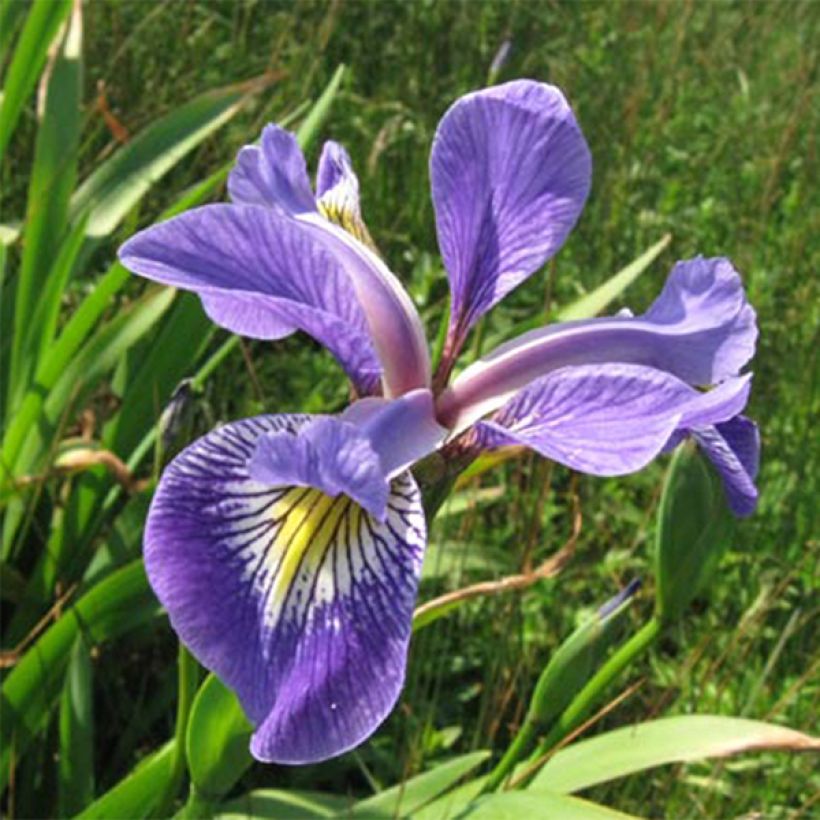

Flowering
Foliage
Plant habit
Botanical data
Iris
versicolor
Variegata
Iridaceae
Blue Flag, Boston Iris
Cultivar or hybrid
Other Iris A to Z
Planting and care
It is primarily a perennial of marshy, moist to waterlogged soil, but it also tolerates slightly drier garden soil, which will reduce its growth somewhat. It can tolerate partial shade, but much prefers open and sunny locations. It can be planted in the ground or even in a perforated pot, placed in shallow water. In the ground, plants should be spaced 40cm (16in) apart.
Keep the soil moist if the plant is not submerged. Remove faded flowers. As soon as flowering becomes less prolific or the flowers are visibly smaller, divide the stumps. This is usually required approximately every 3-4 years, as with garden irises.
Planting period
Intended location
Care
This item has not been reviewed yet - be the first to leave a review about it.
Haven't found what you were looking for?
Hardiness is the lowest winter temperature a plant can endure without suffering serious damage or even dying. However, hardiness is affected by location (a sheltered area, such as a patio), protection (winter cover) and soil type (hardiness is improved by well-drained soil).

Photo Sharing Terms & Conditions
In order to encourage gardeners to interact and share their experiences, Promesse de fleurs offers various media enabling content to be uploaded onto its Site - in particular via the ‘Photo sharing’ module.
The User agrees to refrain from:
- Posting any content that is illegal, prejudicial, insulting, racist, inciteful to hatred, revisionist, contrary to public decency, that infringes on privacy or on the privacy rights of third parties, in particular the publicity rights of persons and goods, intellectual property rights, or the right to privacy.
- Submitting content on behalf of a third party;
- Impersonate the identity of a third party and/or publish any personal information about a third party;
In general, the User undertakes to refrain from any unethical behaviour.
All Content (in particular text, comments, files, images, photos, videos, creative works, etc.), which may be subject to property or intellectual property rights, image or other private rights, shall remain the property of the User, subject to the limited rights granted by the terms of the licence granted by Promesse de fleurs as stated below. Users are at liberty to publish or not to publish such Content on the Site, notably via the ‘Photo Sharing’ facility, and accept that this Content shall be made public and freely accessible, notably on the Internet.
Users further acknowledge, undertake to have ,and guarantee that they hold all necessary rights and permissions to publish such material on the Site, in particular with regard to the legislation in force pertaining to any privacy, property, intellectual property, image, or contractual rights, or rights of any other nature. By publishing such Content on the Site, Users acknowledge accepting full liability as publishers of the Content within the meaning of the law, and grant Promesse de fleurs, free of charge, an inclusive, worldwide licence for the said Content for the entire duration of its publication, including all reproduction, representation, up/downloading, displaying, performing, transmission, and storage rights.
Users also grant permission for their name to be linked to the Content and accept that this link may not always be made available.
By engaging in posting material, Users consent to their Content becoming automatically accessible on the Internet, in particular on other sites and/or blogs and/or web pages of the Promesse de fleurs site, including in particular social pages and the Promesse de fleurs catalogue.
Users may secure the removal of entrusted content free of charge by issuing a simple request via our contact form.
The flowering period indicated on our website applies to countries and regions located in USDA zone 8 (France, the United Kingdom, Ireland, the Netherlands, etc.)
It will vary according to where you live:
- In zones 9 to 10 (Italy, Spain, Greece, etc.), flowering will occur about 2 to 4 weeks earlier.
- In zones 6 to 7 (Germany, Poland, Slovenia, and lower mountainous regions), flowering will be delayed by 2 to 3 weeks.
- In zone 5 (Central Europe, Scandinavia), blooming will be delayed by 3 to 5 weeks.
In temperate climates, pruning of spring-flowering shrubs (forsythia, spireas, etc.) should be done just after flowering.
Pruning of summer-flowering shrubs (Indian Lilac, Perovskia, etc.) can be done in winter or spring.
In cold regions as well as with frost-sensitive plants, avoid pruning too early when severe frosts may still occur.
The planting period indicated on our website applies to countries and regions located in USDA zone 8 (France, United Kingdom, Ireland, Netherlands).
It will vary according to where you live:
- In Mediterranean zones (Marseille, Madrid, Milan, etc.), autumn and winter are the best planting periods.
- In continental zones (Strasbourg, Munich, Vienna, etc.), delay planting by 2 to 3 weeks in spring and bring it forward by 2 to 4 weeks in autumn.
- In mountainous regions (the Alps, Pyrenees, Carpathians, etc.), it is best to plant in late spring (May-June) or late summer (August-September).
The harvesting period indicated on our website applies to countries and regions in USDA zone 8 (France, England, Ireland, the Netherlands).
In colder areas (Scandinavia, Poland, Austria...) fruit and vegetable harvests are likely to be delayed by 3-4 weeks.
In warmer areas (Italy, Spain, Greece, etc.), harvesting will probably take place earlier, depending on weather conditions.
The sowing periods indicated on our website apply to countries and regions within USDA Zone 8 (France, UK, Ireland, Netherlands).
In colder areas (Scandinavia, Poland, Austria...), delay any outdoor sowing by 3-4 weeks, or sow under glass.
In warmer climes (Italy, Spain, Greece, etc.), bring outdoor sowing forward by a few weeks.

